#diamond throne
Text



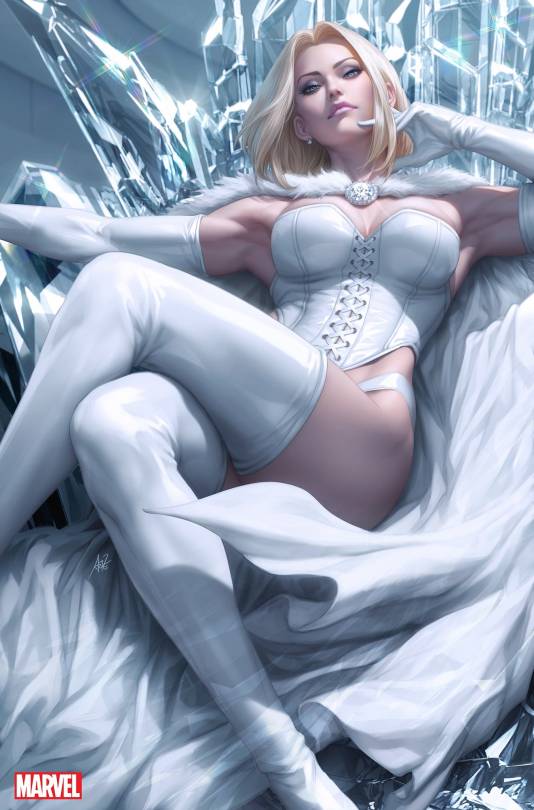
Sins Of Sinister #1 (2023) - Artgerm variant
#emma frost#sins of sinister#variant cover#2023#2020s#artgerm#as main character#solo#notable#white queen#diamonds#sitting#throne#diamond throne#stanley lau
125 notes
·
View notes
Text
Campaign Ideas: The Diamond Throne
Your ancestors founded this village 350 years ago, after the dragon-demon monsters that ruled this continent, the Dramojh, were destroyed by the Giants. Today is your Leaveseeking Ceremony, where you will venture into the outside world for as long as you need and decide if there is something out there that speaks to your truename. Or did your ancestors have the right of it, that the wonder in the…

View On WordPress
0 notes
Text











Who needs a Y with this many Xs? - Experiment On Me - Halsey
King - Florence + The Machine / Daenerys Targaryen / King - Lilith Czar / Carmilla / Salma Hayek - WARGASM / Rhaenyra Targaryen / Daisy - Ashnikko / Rhaenyra Targaryen / Man’s World - MARINA / Azula / you should see me in a crown - Billie Eilish
#parallels#king#florence + the machine#florence welch#daenerys targaryen#game of thrones#lilith czar#carmilla#castlevania#salma hayek#rhaenyra targaryen#house of the dragon#marina#marina and the diamonds#azula#avatar the last airbender#avatar#billie eilish#ashnikko#daisy
489 notes
·
View notes
Photo


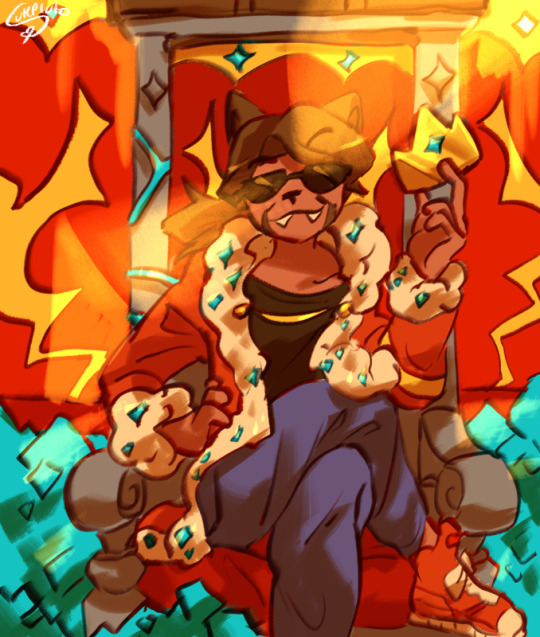



King of Sun / King of Ash / King of Phoenix
aka watch how hard i can try to tie all the season 9 kings together check out my conspiracy board

#mcyt#hermitcraft#hermitcraft season 9#tangotek#rendog#renthedog#rentheking#bdubs#bdoubleo#bdoubleo100#hermitblr#myart#cutepluto screams#(if you look closely you can see that theyre all actually the same throne. thanks bdubs its good to recycle)#(kintsugi but diamonds lol)#mossy reign manifestation
732 notes
·
View notes
Text




When u think ur evil or a troublemaker but u just end up adopting a kid
#the hound#sandor clegane#arya stark#game of thrones#got#a song of ice and fire#asoiaf#tommy jepperd#gus#sweet tooth#blue diamond#spinel#steven universe#eda clawthorne#king clawthorne#the owl house#toh#found family
46 notes
·
View notes
Text

hi hi hello scardubs anyone
#scardubs#hc bdubs#bdouble0#gtws fanart#hermitshipping#gtws#goodtimeswithscar#THE GOOD TIMES#THEY FUCKED ON THE DIAMOND THRONE
492 notes
·
View notes
Text

The Diamond Throne Cover Art by Keith Parkinson
43 notes
·
View notes
Text
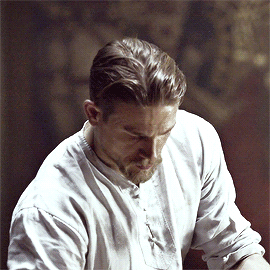
Notes: Previously...
***
“I am just saying, Arthur, it'd be a good idea to start looking for a bride.” Bedivere pressed.
Arthur just hummed. He knew Bedivere was just looking out for him, but Arthur didn’t need a bride. He was going to marry Sansa Stark.
Well, as soon as he convinced her to accept him.
Which would be way easier if Susan helped a bit.
Not that he was bitter about his best friend not helping him with something like that.
There was a knock on the door, then a servant entered when he called him in.
“My lord.” The man bowed. “A message for you, from Lord Pevensie.”
Arthur frowned. What the hell did Peter want with him?
He opened the letter -more like a note -and read it.
A huge grin spread on his face.
“It was lovely seeing you, Bed, but I need to go out.”
Bedivere frowned. “What is wrong?”
“Absolutely nothing.” He grabbed his jacket. “I just need to work on finding that bride for you.” He winked at the man and almost ran out of the door.
#madame baggio#crackship#crossover#gifs not mine#crossover pairings#snippet#au#bridgerton au#the diamonds#game of thrones#sansa stark#the chronicles of narnia#susan pevensie#king arthur legend of the sword#arthur pendragon
15 notes
·
View notes
Text
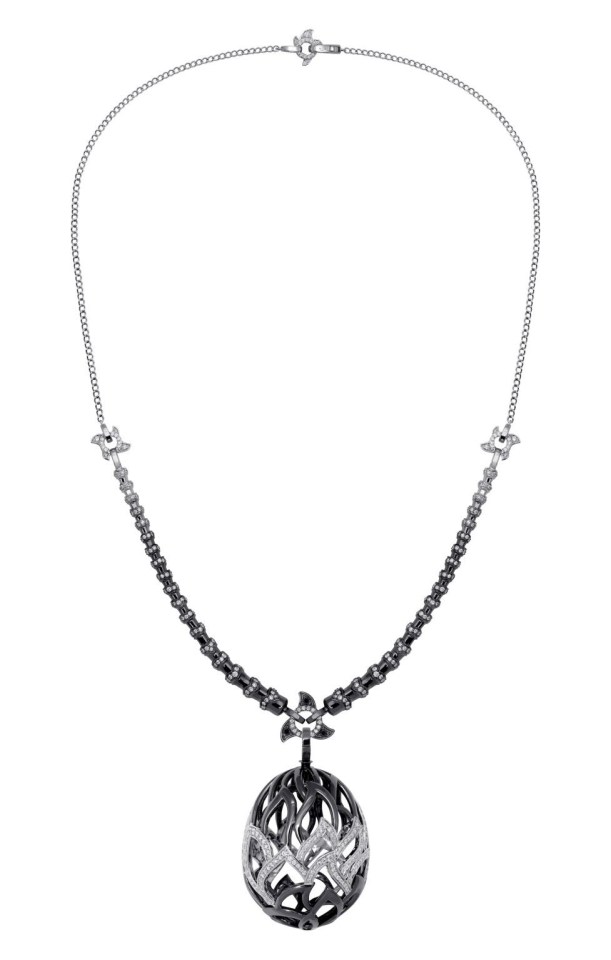
Fabergé x Game Of Thrones Flame Egg Pendant In White Gold, Black Rhodium and Diamonds
Photo Courtesy: Fabergé
Source: news.artnet.com
#faberge#game of thrones#white gold#black rhodium#diamonds#contemporary high jewelry#high jewelry#luxury jewelry#fine jewelry#fine jewellery pieces#gemville
26 notes
·
View notes
Photo

[C] Diamond's beloved... pet?
Commission for RockawayCarter
She loves to give Jimmy some attention while he's being held capti... i mean: he comes over to her place willingly :D
Jimmy Basil-Lisk © ME
Diamond Bernstein © RockawayCarter and ME
If you're reading this, support me on Ko-fi if you want <3
https://ko-fi.com/jamearts
Posted using PostyBirb
#jamearts#commission#rockawaycarter#diamond bernstein#froslass#throne#hime cut#Jimmy Basil-Lisk#pet#caressing#cute#happy#gecko#pokemon#pokemon oc#female#male
3 notes
·
View notes
Text
I've been reading [and writing if you count Redstone and Skulk] a lot of paladin/swordsman books lately and the urge to draw a lineup of all the different paladin characters based on like, personality and book description is just, so strong.
#spazzcat barks#i probably wont but the impulse is strong#the list so far is: clocktaur wars. swordheart. night of the wolves. paladins hope. paladins strength. the diamond throne. oath of swords.#the deed of paxinarian. the dragons blade. [squints] im missing one i think#but anyway its a lot#but theyre all so different in my head?? so many unique personalities#and night of the wolves had /two/ paladins in it#my heart still hasnt recovered from that one#i need to draw them at least theyre amazing#anyway. dont mind me. just gushing about swordsmen again.
19 notes
·
View notes
Text
You proven to yourself and to all of us that you're not for to fly like a pegasus
You don't even deserve the wings you
When you stand beside a legend, you don't even compare
All of the failures help to fuel success in a bloody and visceral weather game of chess
And just because you've disappointed, you'll pay the price
Now accept your fate and die in the pegasus device
#songs that are stuck in my head#I don't even recognize your rainbow mane when you hide it behind that mask of shame#You don't even deserve those wings you bare#You used to be a legend a righteous mare#All of the failure help to fuel success in the bloody and visceral weather game of chess#And then you sit upon your throne and you roll your diamond dice and you send us all to die in your pegasus device#In the rainbow factory where fears and horrors come true#In the rainbow factory where not a single soul gets through#In the rainbow factory where failures pay their tolls#Now I awoken and I'm taking back control#Never read Rainbow Factory but the music for it still hold up
14 notes
·
View notes
Text

vote yes if you have finished the entire book.
vote no if you have not finished the entire book.
(faq · submit a book)
3 notes
·
View notes
Text

★FOLLOW SPREE★
Hi everyone, this is the first time doing following spree I’m looking for new blogs & I’d love to have new mutuals/friends <3 so if you want me to check ur blog, like/reblog this post ❣️
I’m interested in:
• bleach
• jujutsu kaisen
• kimetsu no yaiba
• naruto
• jjba
• Sports anime (slam dunk, haikyuu, ace of diamond, sk8)
• nana
• got
• Games ( resident evil, life is strange, the evil within, yakuza, Detroit)
• Photography, fashion, art
• Jdrama, jrock/jpop
• Anime/manga in general
Bonus:
🌟 if you create your own edits
🌟 have a tagging system
❣️Mutuals if you could signal boost this i would love you more than i already do❣️
#follow spree#following spree#signal boost#bleach#naruto#jujutsu kaisen#ghibli#haikyuu#kimetsu no yaiba#ace of diamond#slam dunk#resident evil#yakuza#life is strange#the evil within#jdrama#jrock#jjba#game of thrones
63 notes
·
View notes
Text
The Coronation Chair: Anatomy of a Medieval throne
The Diamond Jubilee of Queen Elizabeth II prompted the first comprehensive archaeological study of the Medieval throne on which British monarchs are crowned.
It has been battered and vandalised over the ages, but unpicking this majestic artefact’s evolution shed new light on both its original form and that of the enigmatic Stone of Scone, as Warwick Rodwell reveals.
10 August 2013
The Coronation Chair has been illustrated and described since the 14th century, and is renowned the world over.
For hundreds of years, this piece of Medieval furniture has played a seminal role in the anointing and crowning of English monarchs.
It was last used at the coronation of HM The Queen on 2 June 1953, the Diamond Jubilee of which was celebrated this year.
To mark the occasion in 2010-2012, the Chair underwent a long-overdue programme of cleaning, conservation and redisplay in Westminster Abbey.
Concurrently, a detailed archaeological study was carried out and the Chair was comprehensively recorded for the first time.
The project led to a radically new understanding of its construction and decoration, and of its relationship to the Stone of Scone, which was embodied in its seat.
Spoils of war
The origins of the Chair are well known. Indeed, the documentation accompanying its manufacture in the 1290s is still preserved.
Following Edward I’s victory over the Scots in 1296, state documents and items of regalia were surrendered and taken to London as spoils of war.
One of those items was a ceremonial block of sandstone upon which Scottish kings had hitherto been inaugurated at Scone Abbey in Perthshire, the last being John Balliol in 1292.

The Coronation Chair and Stone of Scone.
Constructed in the 1290s on the orders of Edward I, this famous throne recently received its first comprehensive archaeological study.
The results emphasise how the current form of the Stone of Scone can only be understood alongside the evolution of the chair that held it.
Edward I treated the Stone of Scone as a relic and presented it, along with the Scottish crown and sceptre, to the shrine of St Edward the Confessor in Westminster Abbey on 18 June 1297.
He ordered the construction of a great gilt-bronze chair to incorporate the Stone as its seat.
The chair was cast but was scrapped before it was finished and a new one made of oak, thereby reducing its weight from three-quarters of a ton to one-quarter.
St Edward’s Chair, as it is properly known (‘Coronation Chair’ is a relatively recent naming), was designed as a liturgical furnishing that would stand close to the shrine altar, where it served as a seat for priests officiating at masses.
Opinion is divided as to when the Chair was first used in the coronation ritual, but it was no later than 1399, when Henry IV was crowned.
A manuscript illustration of the coronation of Edward II in 1308, however, shows the king seated in what is almost certainly the Coronation Chair.
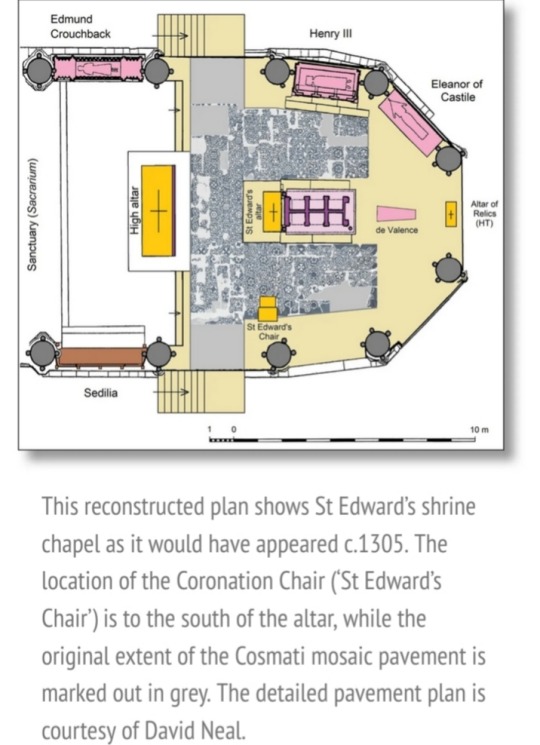
It is an extraordinary fact that, like a surprising number of artefacts and structures of first-rank importance, the Coronation Chair had never been systematically studied and recorded until now.
John Carter’s sketches of 1767 provided the basis for all known drawings but neither he nor any other antiquary recorded how the Chair was constructed or unravelled the vicissitudes of its later history.
Like most ancient artefacts of complex construction, it has undergone fundamental alterations as well as suffered deterioration over the centuries.
In fact, very little has been written about the Chair at all, as opposed to the Stone that it encapsulated.
The Chair has been the subject of a dozen books, scores of articles, Parliamentary debates, a commercial film, theft, hoaxes, and much political posturing.
Myths and misdirection
The Stone has accrued a huge mythology, but that is wholly of Medieval or later invention, as Nick Aitchison demonstrated in his study Scotland’s Stone of Destiny (2000).
The block is made of Lower Old Red Sandstone and has a geological signature that confirms it derives from the Scone Formation.
It did not originate in Egypt, Ireland or the west of Scotland, as the Romantic tales would have led us to believe.
Indeed, the Stone’s spurious biblical connection (as ‘Jacob’s Pillow’ – the stone on which, according to the Book of Genesis, the sleeping Jacob had a vision) was already being ridiculed in 1600 by William Camden.
Much of the Stone’s pseudo-history is of even more recent invention.
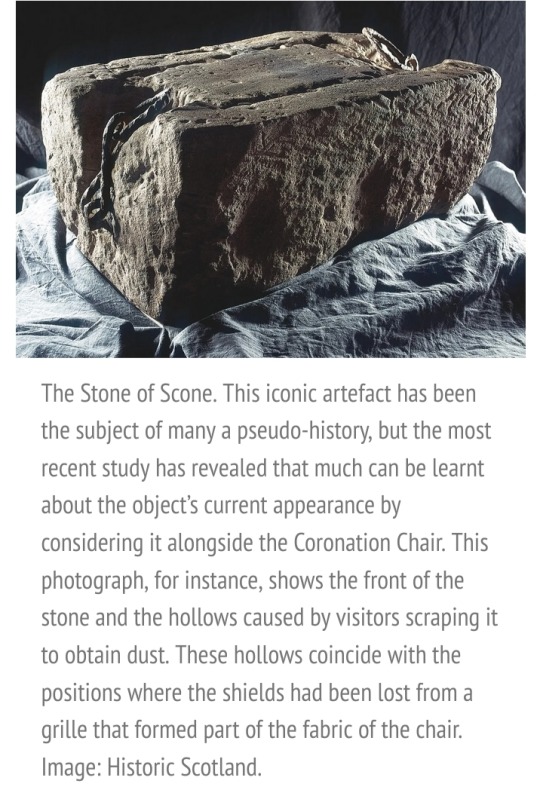
The first archaeologically objective study of the Stone took place in 1996, when it was removed from the Coronation Chair and sent to Edinburgh Castle, where it currently resides on loan from the Crown.
Under the direction of David Breeze and Richard Welander, Historic Scotland carried out a detailed examination, the findings of which were published by the Society of Antiquaries of Scotland: The Stone of Destiny: artefact and icon (2003).
The Stone’s intimate relationship to the Chair has never been explored, however, resulting in the wholly unwarranted assumption by past commentators that the physical features exhibited by the block today relate to its pre-1296 history in Scotland.
This in turn has given rise to the invention of historical scenarios to explain these features.
Some writers have pronounced the block to be a Roman building stone or part of a pagan altar; others have claimed a Bronze Age or Pictish ancestry.
The iron links and rings that are attached to the two ends of the block have given rise to much comment, as well as claims that they were inserted for the purpose of carrying the Stone from site to site in Scotland, or alternatively for transporting it to London.
Finally, there are the conspiracy theorists who would have us believe that the Stone is fake.

These contentions can be refuted without exception. When we study the Chair and the Stone as archaeological artefacts, not just individually but jointly, and marry the findings with reliable historical evidence, a clear picture emerges.
The most fundamental misapprehension is that the Stone (as we see it today) was brought from Scone and placed in a made-to-measure compartment under the seat of the Chair, and that it simply sat there for the next 700 years.
In reality, the Chair and the Stone were made for one another, and both have been subjected to significant change over the centuries.

Made for each other
There is no basis for casting doubt on the authenticity of the Stone of Scone, or for claiming it as a Roman ashlar or a Pictish symbol-stone.
The upper and lower faces are natural bedding planes and are untooled, although the former is well worn through its prolonged use as a seat.
The four vertical edges were all crisply dressed in 1297 to create a close-fitting, rectangular seat for the new Chair.
One of the revelations of the 2010 study was the fact that the Coronation Chair did not have a wooden seat-board until the 16th or 17th century: the Stone itself was the seat.
The Chair frame is made of oak and comprises four corner-posts, and a series of moulded horizontal rails.
The sides of the Chair have upswept arms, which were originally decorated with carved lions.
The joints are mortised-and-tenoned but are inherently weak. The frame gets its structural strength from the lining of thick planks.
Below seat level, the sides are pierced by large quatrefoils – that is, four partially overlapping circles creating a shape akin to a stylised four-leaf clover – each of which originally had a painted heraldic shield at its centre.
By the 1820s, the shields had all been lost, and the quatrefoil grille at the front had gone too.
The gang that stole the Stone in 1950 also smashed the front rail and further weakened the frame. A replacement grille has now been fitted to restore its structural strength.
The Stone of Scone rested in this compartment and could be glimpsed on all sides; its top was fully exposed.

William Lethaby’s 1906 reconstruction of the gilt figure of a king in the back of the Chair. He is depicted seated on a low throne, with his feet resting on a lion. Only the lower part of this image survives today.
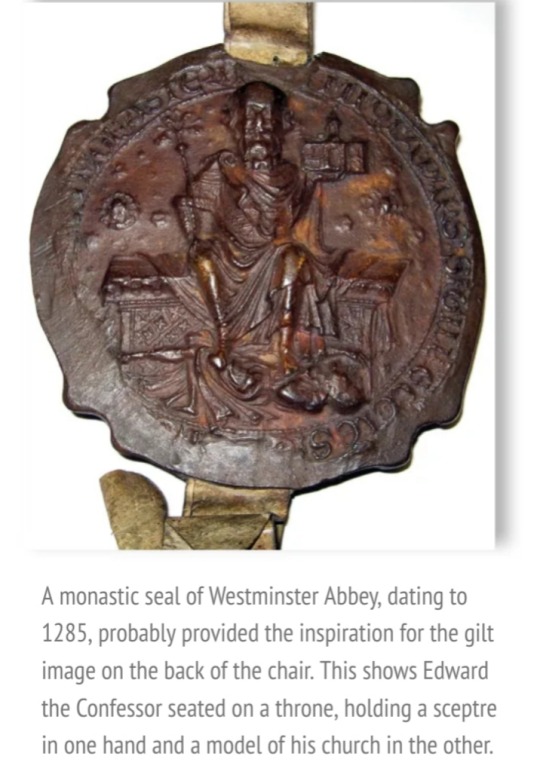
Externally, the sides and back of the Chair were carved and moulded with Gothic arcades.
The corner-posts too were embellished with blind, pointed – lancet – arches, and surmounted by pinnacles from which decorative foliage or ‘crockets’ sprouted.
No timber was originally visible, though, as the surfaces were entirely covered with decoratively punched gilding and pseudo-enamels.
There were also many pieces of coloured glass inlaid into the carved decoration. These inserts would have carried painted and gilded motifs, similar to those found in profusion on the altarpiece of Henry III known as the Westminster Retable (c. 1270).
Internally, the Chair was uncarved but was covered with gold leaf. It bore finely punched decoration - showing birds, animals, vegetation, and Gothic motifs.
Dominating the centre of the back was the seated figure of a king with his feet resting on a lion, almost certainly Edward the Confessor.
It was the work of Walter of Durham, principal painter to the court of Edward I. Unfortunately, most of this impressive display has been lost over time.
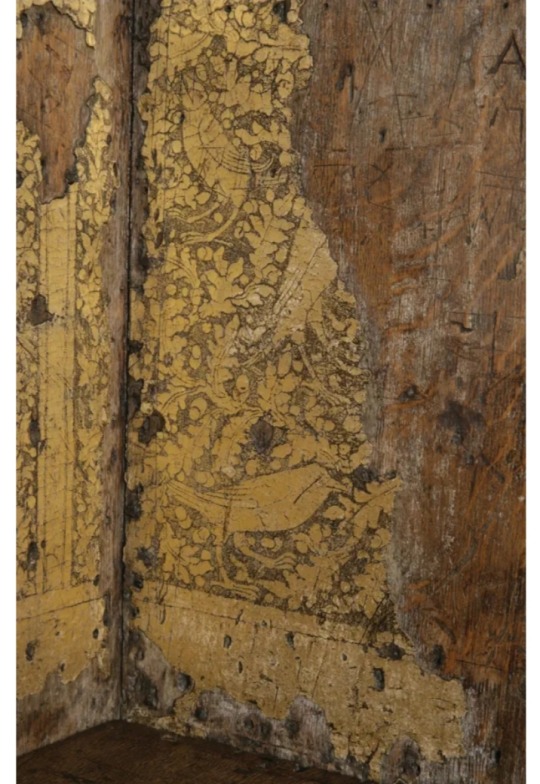
A detail of the punch-decorated gilding surviving inside the Chair’s left arm, showing birds amid vegetation.
The conservation programme of 2010-2012 was undertaken by Marie Louise Sauerberg, then of the Hamilton Kerr Institute, but now Westminster Abbey’s Senior Conservator.
Her work was key to unlocking the history of the Chair’s decoration, particularly by demonstrating that the all-over gilded appearance was primary.
In the 1950s, it had been suggested that the Chair was initially white in colour, emulating King Solomon’s ivory throne.
Royal pride
Perhaps the most striking aspect of the Coronation Chair today is the gilt plinth on which it is raised, comprising four magnificent lions with Oriental features.
These were fitted in 1727 by the royal furniture-maker for the coronation of George II and replaced an earlier plinth, which also incorporated lions.
That plinth may have been made in 1509 for the coronation of Henry VIII.
Since both lion-plinths were fixed to the Chair frame, the Stone could only be inserted into the seat compartment from above, but this was not the original arrangement.
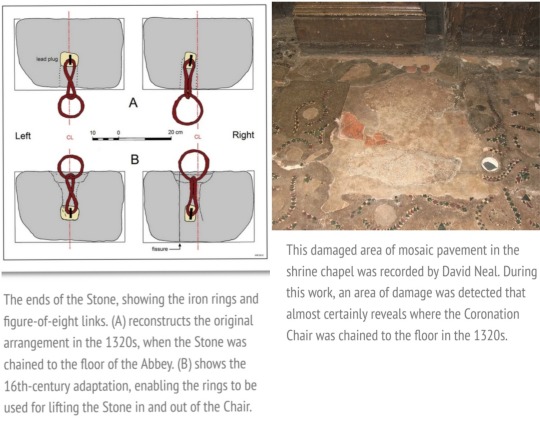
Walter of Durham’s exquisite gilt decoration would have been wrecked by manhandling a close-fitting, 3-cwt block of sandstone through the seat compartment.
Every time the Chair was required for a coronation, it had to be taken from the Confessor’s chapel through a narrow doorway, carried down steps, and repositioned in the Abbey.
Four operations were involved in extricating and replacing the Stone.
Almost certainly, the original plinth was a separate construction that rested on the floor. The Stone was placed on it and the Chair lowered over that.
Iron links and rings are attached to the ends of the Stone by staples set into lead plugs.
Various theories about their date and purpose have been advanced, all based on the assumption that they were used for lifting or carrying.
But nobody seems to have noticed that their fixing points are below the Stone’s centre-of-gravity, which means that it would instantly rotate when lifted.
Also, the links are not long enough for the rings to clear the top of the Stone, making it impossible to thread a carrying-pole of adequate diameter through them.
It is now clear that the ironwork was attached to the block in c. 1324-1327, on the instruction of Abbot Curtlyngton, expressly for the purpose of chaining it to the floor of the chapel.
At the time, he was under pressure from Edward III to relinquish the Stone so that it could be used as a bargaining counter with the Scots.
The abbot refused and the chronicler Geoffrey le Baker tells us that ‘the stone was now fixed by iron chains to the floor of Westminster Abbey under the royal throne’.
Since enforced removal of an object gifted to a shrine would have constituted sacrilege, the king backed down.
The 13th-century marble and glass mosaic pavement in the Shrine chapel has been meticulously recorded by David Neal.
During his work, we noticed that a square area to the south of the altar, where the mass priest’s seat would have stood, had been destroyed.
Almost certainly, this marks the place where the pavement was broken through in the 1320s to embed anchors in the floor for the chains that secured the Stone.

When the Chair was fitted with the first of the lion plinths, a new means of manoeuvring the Stone in and out of the seat compartment had to be found: the only route was from above.
The iron fittings were now pressed into service as lifting devices. Channels were crudely cut into the ends of the Stone so that the links could stand up, rather than hang down, and ropes could be passed through the rings.
The tendency for the unbalanced Stone to rotate was largely mitigated by the links being constrained in channels.
It was a clumsy compromise but it worked, albeit inflicting damage on the gilded interior of the Chair, as the Stone was hauled in and out.
The institutional history of Westminster Abbey in the two decades following its dissolution in 1540 is complex, but remarkably, the shrine of St Edward and the royal tombs survived.
The later 16th century saw a fashion for attaching historical labels (tabulae) to features around the Abbey, including the shrine, tombs and St Edward’s Chair.
These were generally painted either directly on the object or on a board, but in the case of the Chair, it seems that there was initially an intention to insert an inscribed brass plate in the upper face of the Stone.
The rectangular outline for the plate was roughly chiselled. The matrix was never fully cut and the project aborted. A painted label on a board was provided instead.
The change of plan most likely resulted from a decision to fit a timber seat-board over the Stone that had two further consequences.
First, battens had to be fitted to the sides of the Chair to support the seat-board, thereby reducing the size of the Stone compartment opening.
The block had to be shortened, and both ends were cut back by c. 15mm.
Second, the iron rings projected above the top of the Stone, obstructing the fixing of the seat.
To solve this problem, housings were hacked into the top of the Stone, allowing the rings to lie flat.
13th-century survival
Since the late 16th century, travellers and antiquaries have written accounts of the Chair, from which we learn that it suffered casual abuse until Queen Victoria came to the throne.
All the glass inserts were prised out, scores of slices were removed from the frame with pocket-knives and taken as souvenirs, names and initials were liberally carved in the wood, and the shields were stolen from the quatrefoils, exposing the sides of the Stone, which was then scraped with knives to acquire samples of its dust.
Three shallow scoops scored into the front edge result from this activity.
In the 18th century, when the second lion-plinth and new seat-board were fitted, further modifications to both the Chair and Stone occurred.
Although the latter had been shortened, the iron staples to which the rings were attached projected awkwardly, gouging the sides of the Chair every time the Stone was moved.
To ease this, the crowns of the staples were filed down. Something even more barbaric happened between 1727 and 1821: the lower edges of the Stone were broken away with nine hammer-blows.
There is no obvious explanation for this – perhaps the pieces were sold as souvenirs.
Even in more recent times, the Chair has suffered periodically.
In 1887, the Office of Works painted it brown for the celebration of Queen Victoria’s Golden Jubilee.
A public outcry ensued and great damage was done to the gilt decoration when trying to remove the paint.
In 1914, Suffragettes attached a home-made bomb to one of the Chair’s pinnacles, causing more damage.
In 1939-1945, the Chair was stored in the crypt of Gloucester Cathedral, where it narrowly escaped destruction by an infestation of dry rot.
Finally, as well as vandalising the Chair, the gang that stole the Stone in 1950 dropped it and broke it.
Given this long and varied history, it is perhaps remarkable that the Chair survives at all.
Yet our study makes it clear that, despite having fallen victim to neglect, politics and the whims of fashion, St Edward’s Chair and the Stone of Scone – in the form we know it today – are two components of a single artefact, made in the 1290s.
They have an integrated physical history, and shared archaeology: one cannot be understood without the other.
#Coronation Chair#St Edward's Chair#King Edward's Chair#Stone of Scone#Coronation Stone#King Edward I#British History#British Royal Family#Queen Victoria#Queen Elizabeth II#medieval throne#Golden Jubilee of Queen Victoria (1887)#Diamond Jubilee of Elizabeth II (2012)
51 notes
·
View notes
Text
Meanwhile in Storm’s End…..
Aemond pops hip, flips long blond hair, grabs mic, dramatically removes eyepatch….
✨🎶Best believe I’m still bejeweled when I walk in a room, I can still make the whole place shimmer 🎶 ✨

Summoning his inner midnights era swiftie. ✨
#what’s a girl gotta do#a diamond’s gotta shine#aemond targaryen#prince aemond#aemond one eye#hotd aemond#aemond the kinslayer#house of the dragon#game of thrones#hotd thoughts#taylor swift#midnights#bejeweled#such a drama queen#ts10 midnights#midnights album#pop music#swifties
27 notes
·
View notes